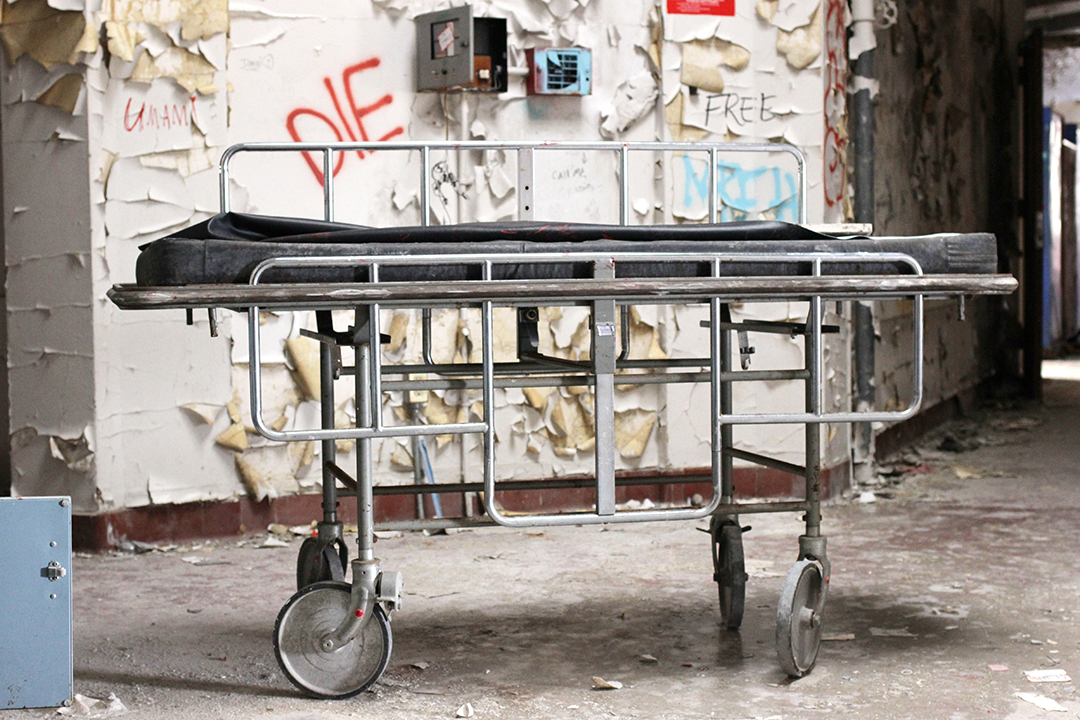Letchworth Village 2018
I've been itching for an "adventure" day lately, so last week, despite the cold, we bundled up and headed upstate. We had initially planned on exploring remnants of the Borscht Belt resorts, but realized that the trip would put us over our ZipCar mile limit (ugh) so we decided to check out the abandoned parts of Rockland County Psychiatric. I'd been dreaming about exploring RCP for years, ever since I learned that it had a bowling alley, but unfortunately (for us, at least) the buildings look as if they're in the process of being demolished. They were all circled by construction fences and workers were milling about, proving that when you're dealing with abandoned places, you can never be sure of what you're going to find (or not find).
After it became clear that Rockland County Psych was a bust, we implemented the back-up plan to the back-up plan: Letchworth Village. We'd partially explored Letchworth in July, but there was still so much left to explore. Letchworth's campus once consisted of more than 130 buildings, and although there aren't that many left, it's still full of fascinating, slowly crumbling structures.
Letchworth Village was built as a home for the mentally and physically disabled—you can read more about its sordid history in my first post—and it's been abandoned since 1996. The buildings are covered in graffiti but there is still a surprising amount of stuff left inside—hospital beds, tubs, dental equipment, papers, dishes, cups and chairs (so many chairs!).
This time we explored mostly dormitories—all of which had the same general layout and began to blend together after a while—but my main goal for the day was to find the "morgue." I'd seen photos of it and was upset that we had missed it on our first visit. I didn't have much information on where to find it, but I had read that the hospital building was located north of the boys' dormitories, so I knew we were in the right general vicinity.
We knew we were close when we entered a large building and saw what appeared to be dental equipment, and soon enough David rounded the corner and said "here's something." I think calling it a morgue may be inaccurate, but these four cold storage slots were obviously for storing bodies. Medical testing took place at Letchworth—willingly or not—and in 1950, the first trial case of the polio vaccine was administered to an 8-year-old patient. Luckily, the patient suffered no side effects and the vaccine was administered to 19 more children, none of which developed complications.
When I got home, I looked up Geraldo's award-winning 1972 documentary, Willowbrook: The Last Great Disgrace, in which Geraldo likens the conditions at Letchworth to the abuse and neglect that he found at the Willowbrook State School in Staten Island. The documentary even includes brief footage of the squalid conditions that he and his camera crew discovered during a surprise visit to Letchworth. It was incredibly sad to watch, and it exacerbated my already complicated feelings about exploring places like this. I find the decay process of buildings to be fascinating and I'm interested in the history and lives contained within the leftovers—but knowing about the horrors that occurred here doesn't make me sad that nature is slowly reclaiming these buildings.









































